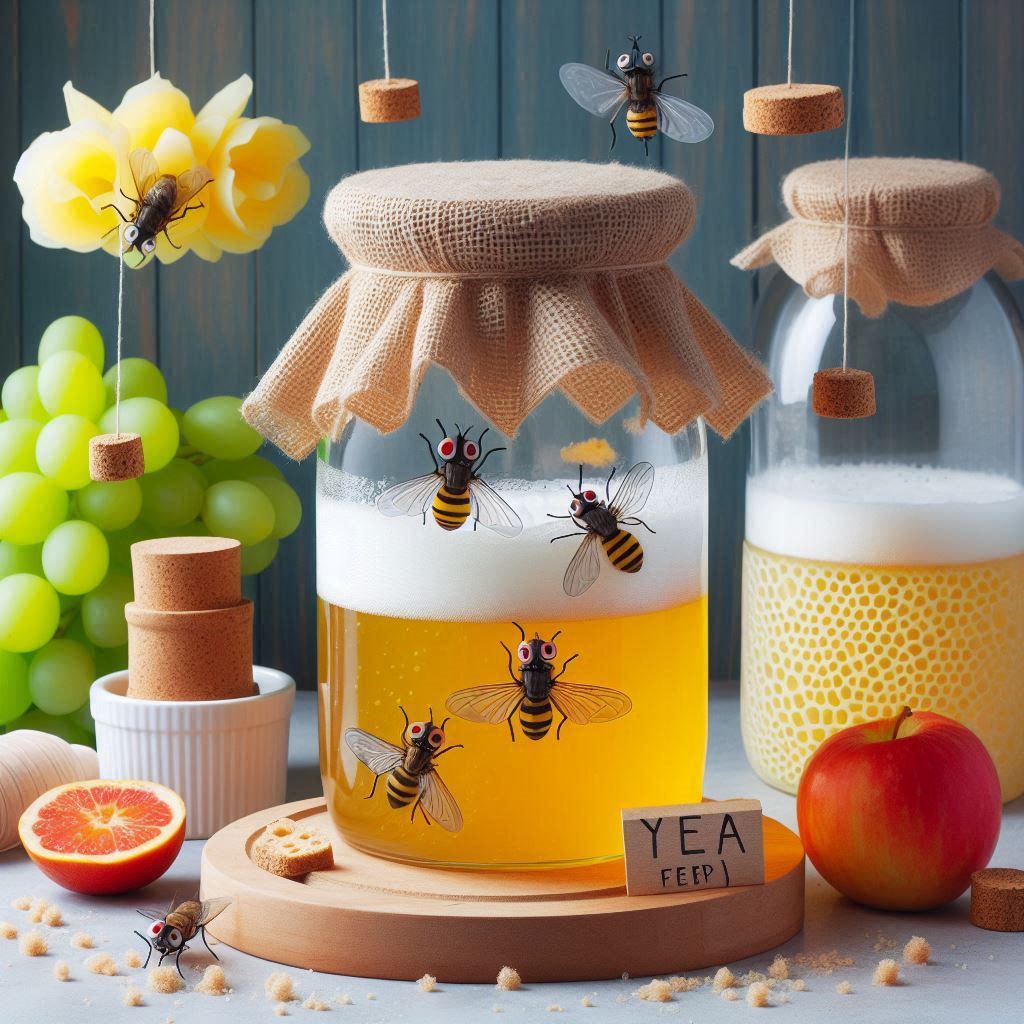Flies are buzzing, persistent insects that seem to appear out of nowhere, landing on your food, circling your head, and generally disrupting your peace of mind. While they might seem like a minor annoyance, flies can actually pose health risks, spreading bacteria and contaminating surfaces.
But before you resort to harsh chemical sprays, consider the power of DIY fly traps! These homemade solutions are not only cost-effective and safe for use around children and pets, but they can also be surprisingly effective in keeping your fly population under control. Plus, there’s a certain satisfaction in knowing you created your own fly-fighting arsenal.
Understanding Fly Traps: A Targeted Approach
The first step to building a successful fly trap is understanding your enemy. Different fly species have different preferences, so tailoring your trap to the specific type of fly buzzing around your home is key.
- Fruit Flies: These tiny terrors are attracted to sweet, fermenting smells. They’re often found near ripening fruit bowls or overflowing garbage cans.
- House Flies: These larger flies prefer savory baits like decaying meat or spilled drinks. They’re commonly seen near trash cans, open windows, or pet areas.
Once you’ve identified your fly foe, you can choose the appropriate attractant. Sweet baits like sugar water or overripe fruit work well for fruit flies, while savory options like meat scraps or yeast can entice house flies.
Fly Trap Mechanisms: Drowning or Sticking?
There are two main ways DIY fly traps work: drowning and sticking. Drowning traps use a liquid bait with a small amount of dish soap to break the surface tension. Flies, lured by the scent, land on the liquid and get trapped. Sticking traps, on the other hand, use a sticky substance like honey or petroleum jelly to ensnare unsuspecting flies.
11 DIY Fly Trap Ideas to Outsmart Those Pesky Pests
Now, let’s get down to business! Here are 11 DIY fly trap ideas, categorized based on the type of fly they target:
For the Fruit Fly Fanatics:
1: Apple Cider Vinegar Trap (The Classic):

This is a simple yet highly effective trap for fruit flies. In a small bowl or cup, combine 1/4 cup apple cider vinegar with a few drops of dish soap. The sweet vinegar smell attracts the flies, while the soap breaks the surface tension, causing them to drown.
2: Wine Bottle Trap (The Fruity Funhouse):
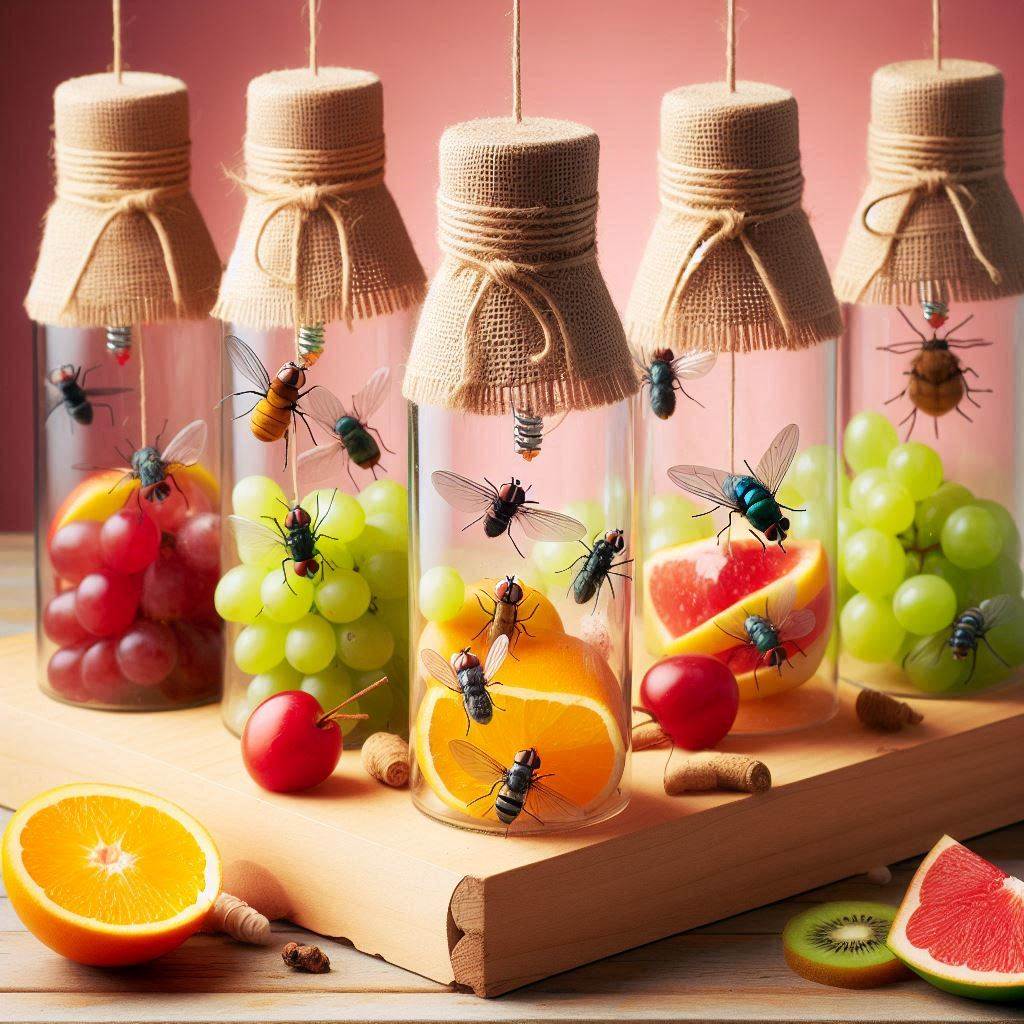
Recycle an empty wine bottle! Cut the top third of the bottle off and invert it into the bottom section, creating a funnel. Add a few slices of overripe fruit (banana, apple core) as bait. The flies will be drawn inside but struggle to find their way out due to the narrow neck.
3: Paper Cone Trap (The Sneaky Sneak):
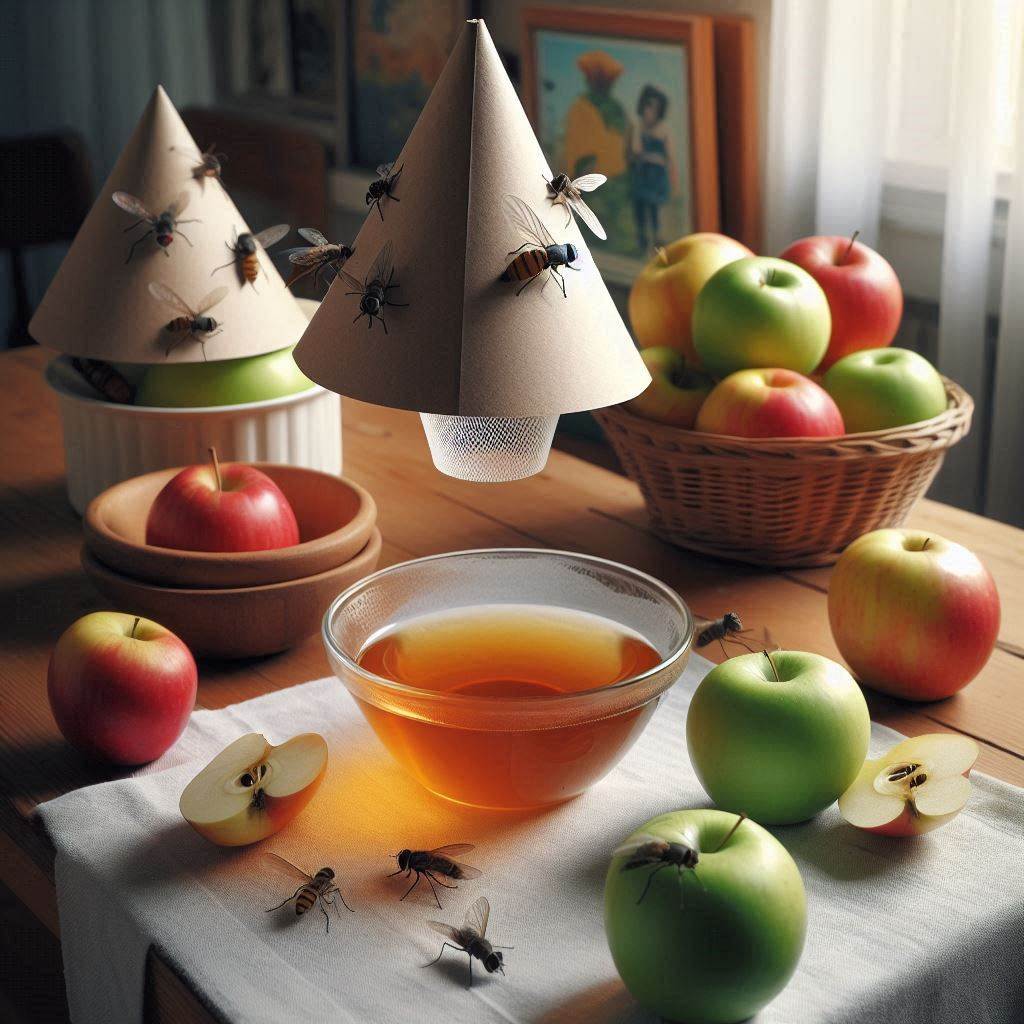
Roll a sheet of paper into a cone shape, with the narrow end at the bottom. Secure the cone with tape. Place the cone over the top of a jar filled with a fruit fly bait (apple cider vinegar, sugary water with a few drops of yeast). The flies will enter the jar through the wide end of the cone, but the cone’s shape makes it difficult for them to escape.
4: Mason Jar Trap (The Poke-a-Hole Punisher):
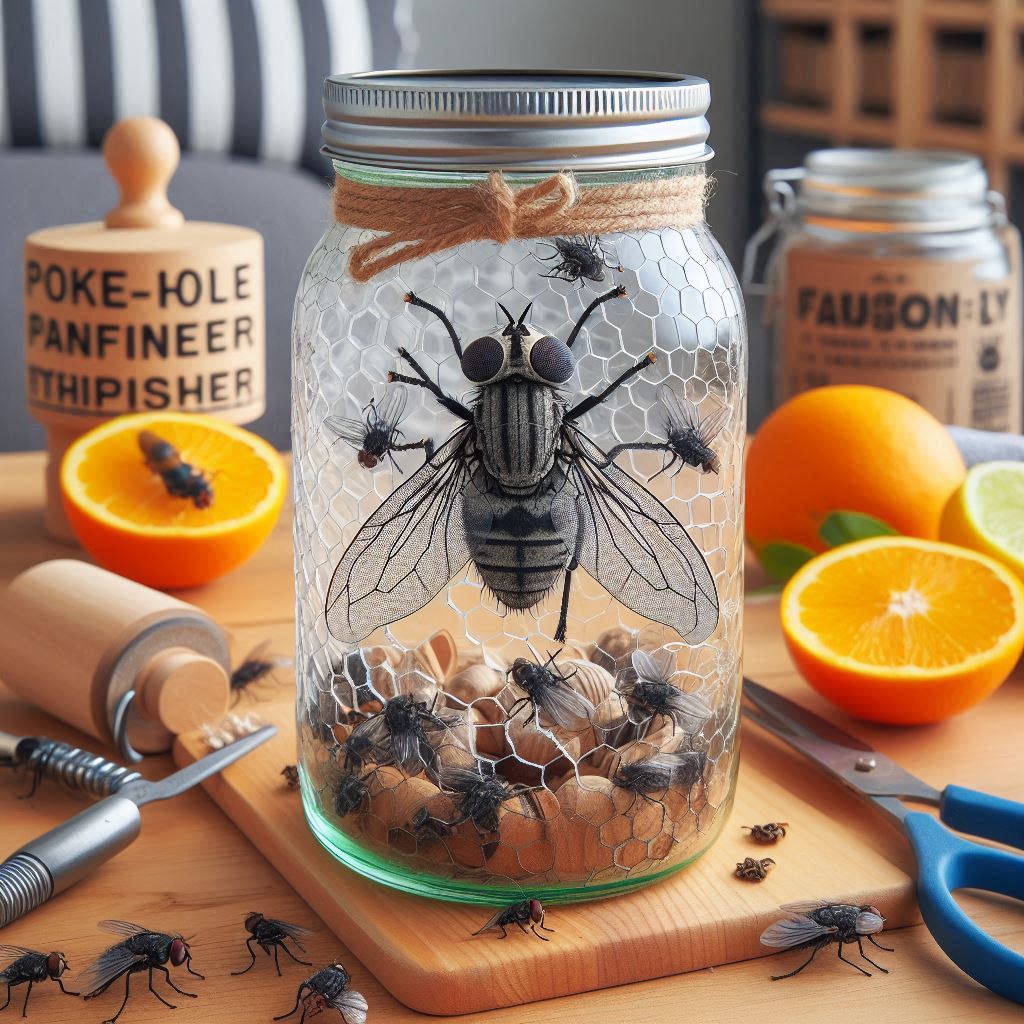
This trap is versatile and can be adapted to target both fruit flies and house flies. In a mason jar lid, poke several small holes with a nail and hammer. Fill the jar with your chosen bait (fruit for fruit flies, yeast mixture for house flies). The flies will be drawn to the smell and enter through the holes, but the smooth jar walls will make it hard for them to climb out.
For the House Fly Hassle:
5: Yeast Trap (The Bubbling Bonanza):
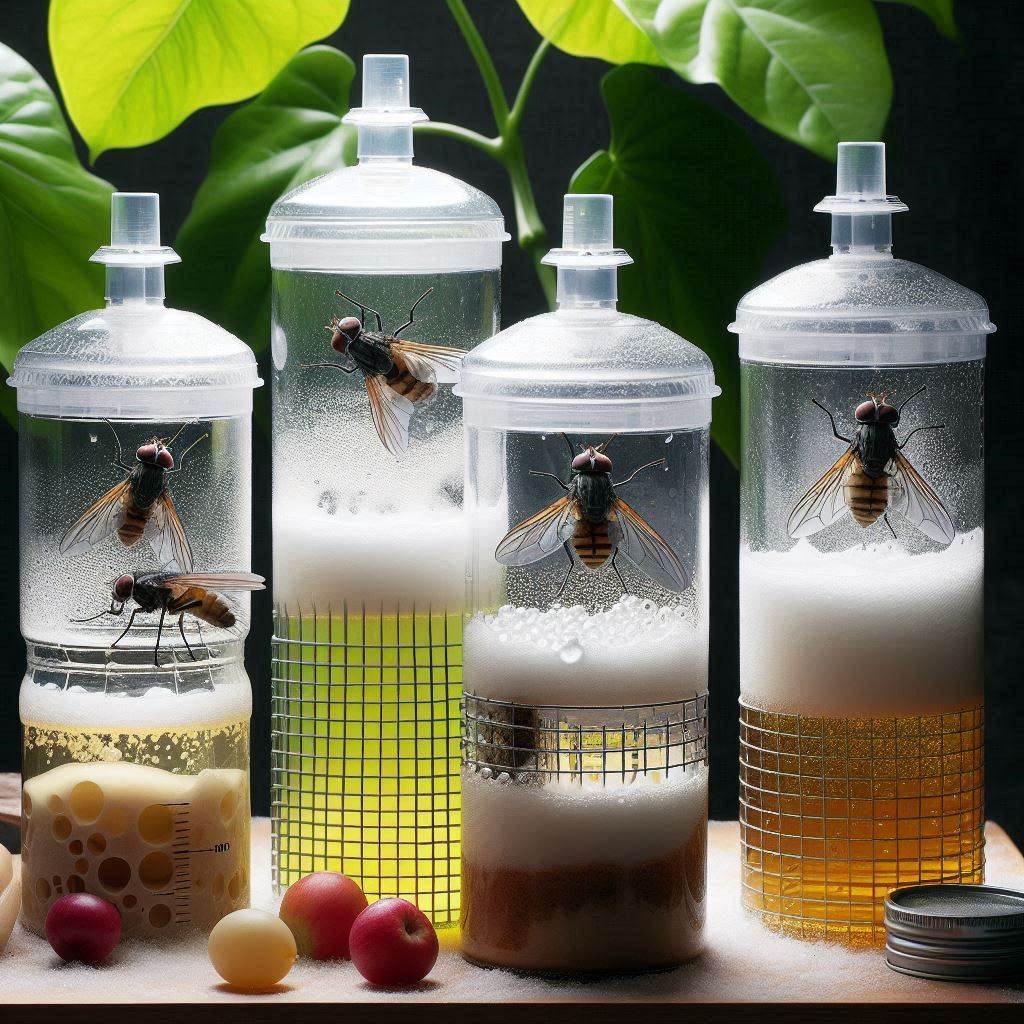
This trap utilizes the power of fermentation to attract house flies. In a small bowl, combine warm water, sugar, and a packet of active dry yeast. The mixture will bubble and create a yeasty scent that house flies find irresistible. They’ll dive in for a sip and drown in the soapy solution.
6: Soap Spray Bottle (The DIY Fly Fighter):
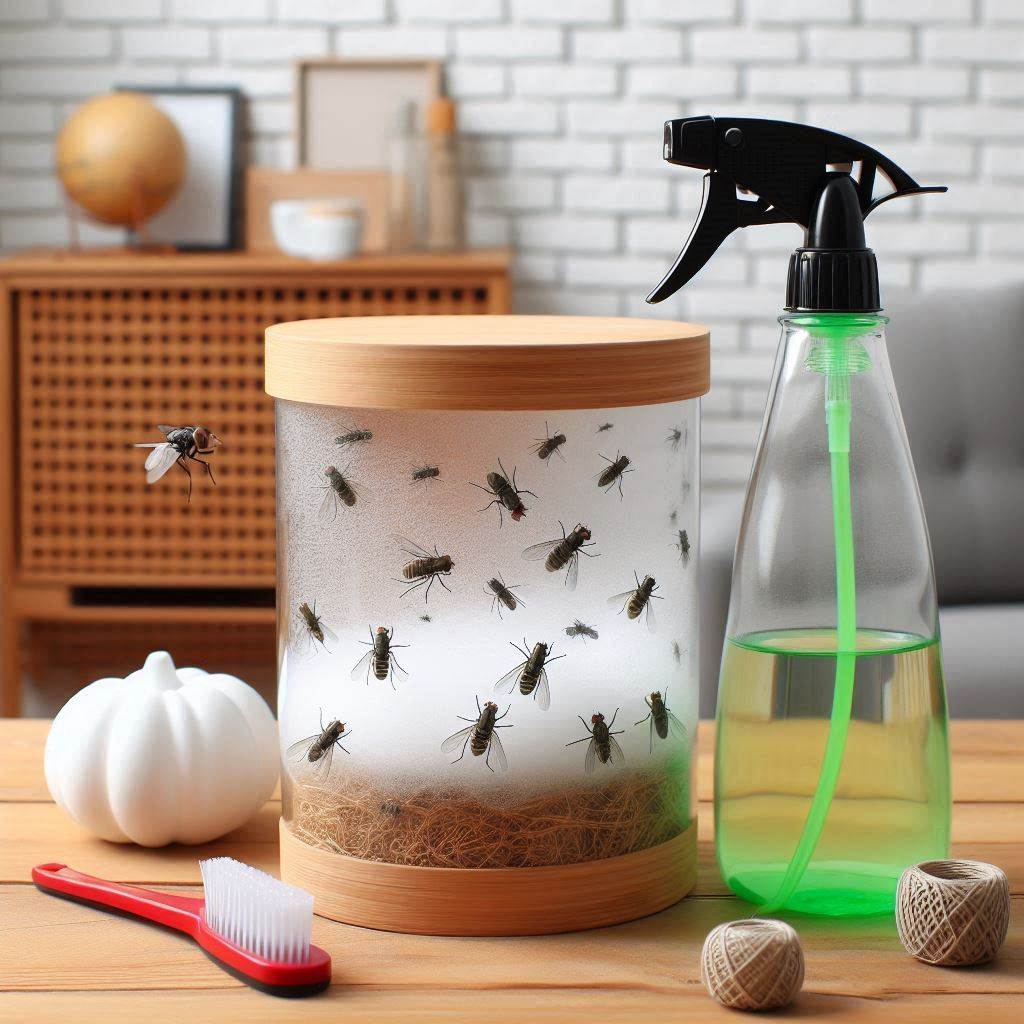
Here’s a proactive approach. Fill a spray bottle with water and add a few drops of dish soap. Shake well. This homemade fly spray can be used to directly target and knock down house flies. Just be sure to avoid spraying near surfaces or objects that might be damaged by soapy water.
7: Fly Paper Trap (The Sticky Situation – with a Twist!):
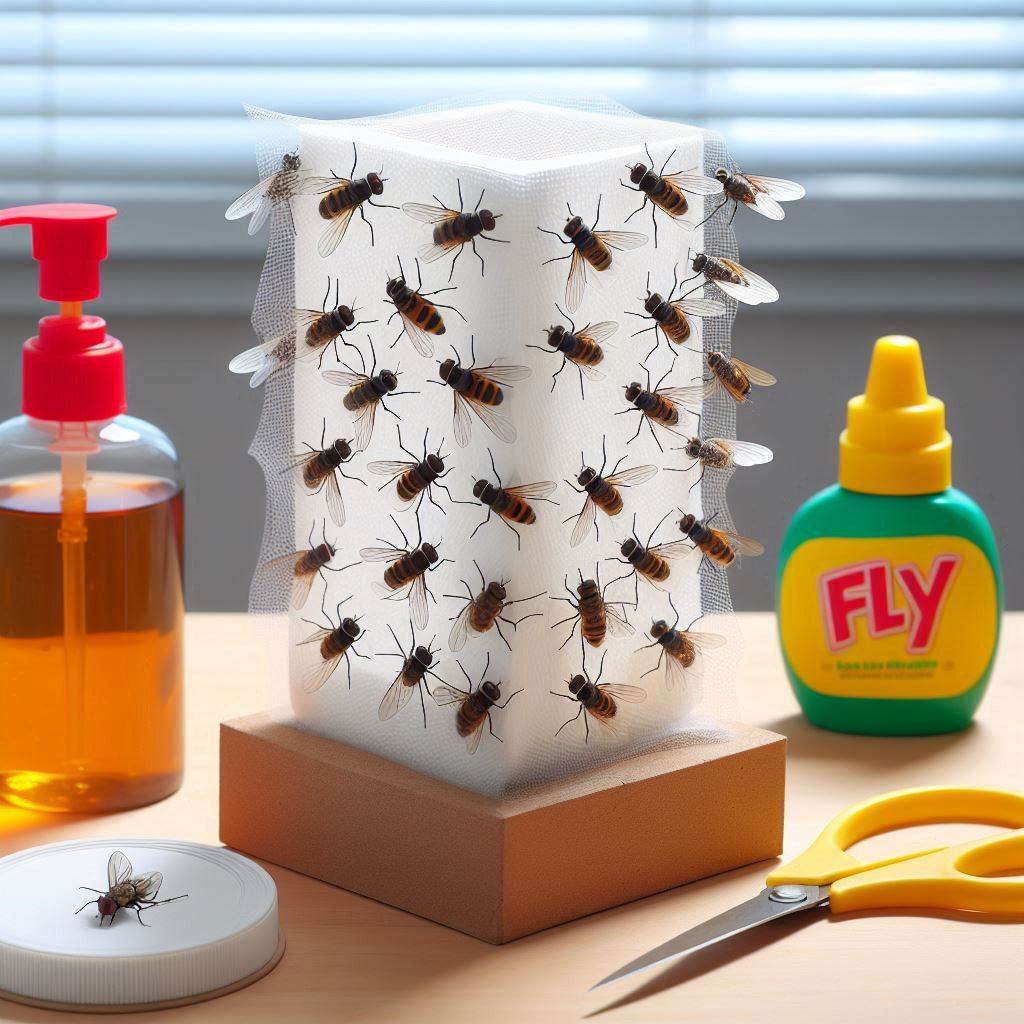
While traditional fly paper works, it can be unsightly. Consider a more aesthetically pleasing alternative. Cut colorful construction paper into strips and coat them with a sticky substance like honey mixed with petroleum jelly. Hang these sticky fly traps strategically near windows or doorways, where house flies are likely to enter.
General Fly Foes:
8: Bowl of Water Trap (The Optical Illusion):
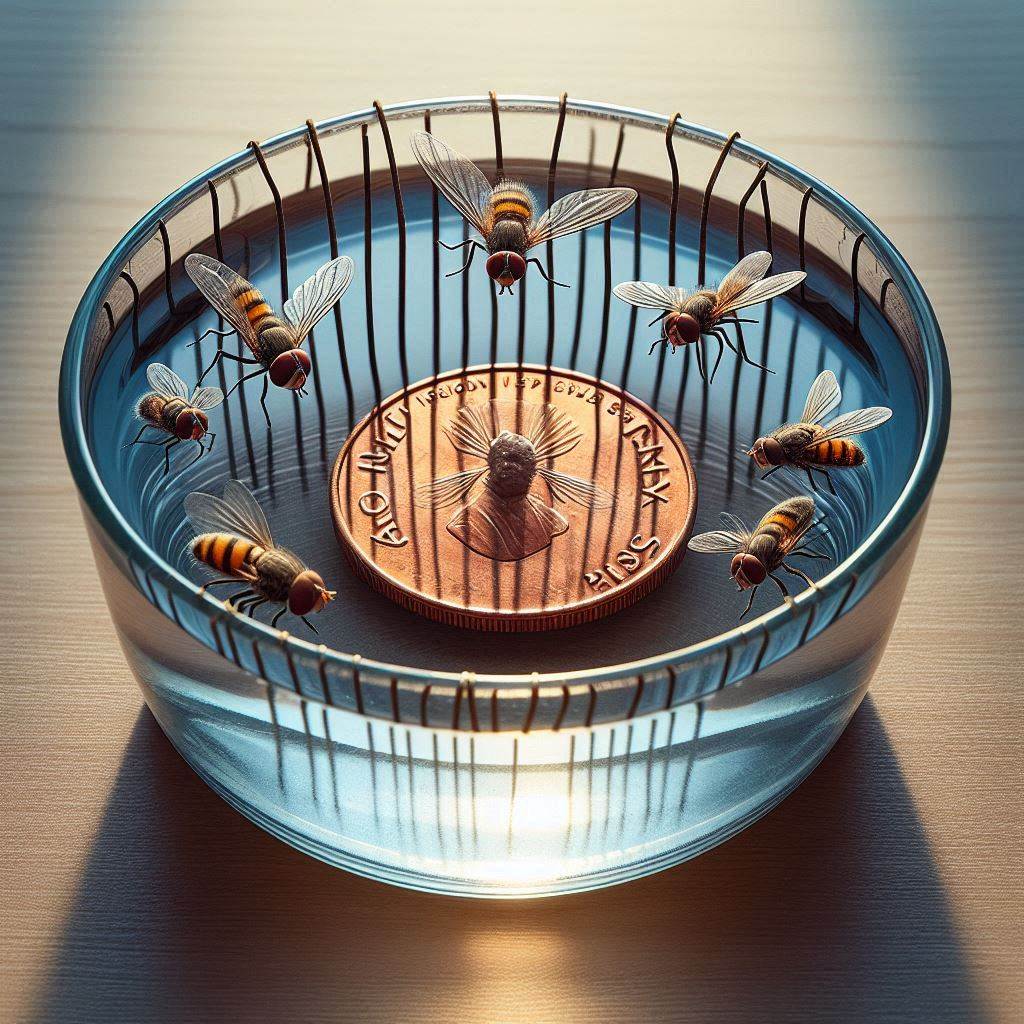
This trap relies on a clever trick of the light. Fill a shallow bowl with water and place a penny in the center. Flies are known to be repelled by the reflective surface of water. When they approach the bowl, the distorted image caused by the refraction of light through the water makes them think it’s a solid surface. They’ll land on the water and drown.
9: Sticky Bottle Trap (The Recycled Repellent):
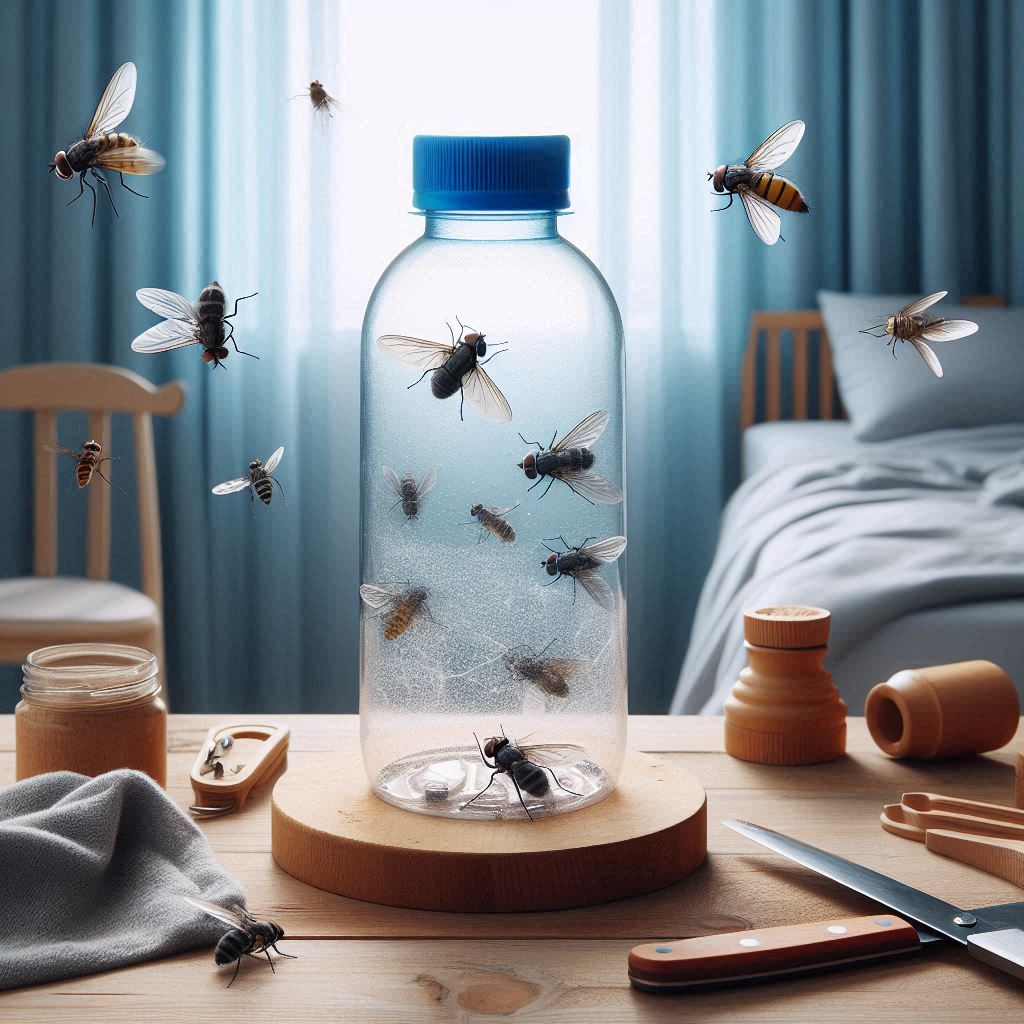
Reuse a plastic bottle! Cut the top third off the bottle and invert it into the bottom section, similar to the wine bottle trap. Smear the inside of the inverted top with a sticky substance like petroleum jelly or honey. Flies, lured by a bait placed in the bottom section (fruit scraps for fruit flies, meat scraps for house flies), will crawl inside and get stuck on the sticky surface.
10: Carnivorous Plant Trap (The Botanical Bounty Hunter):
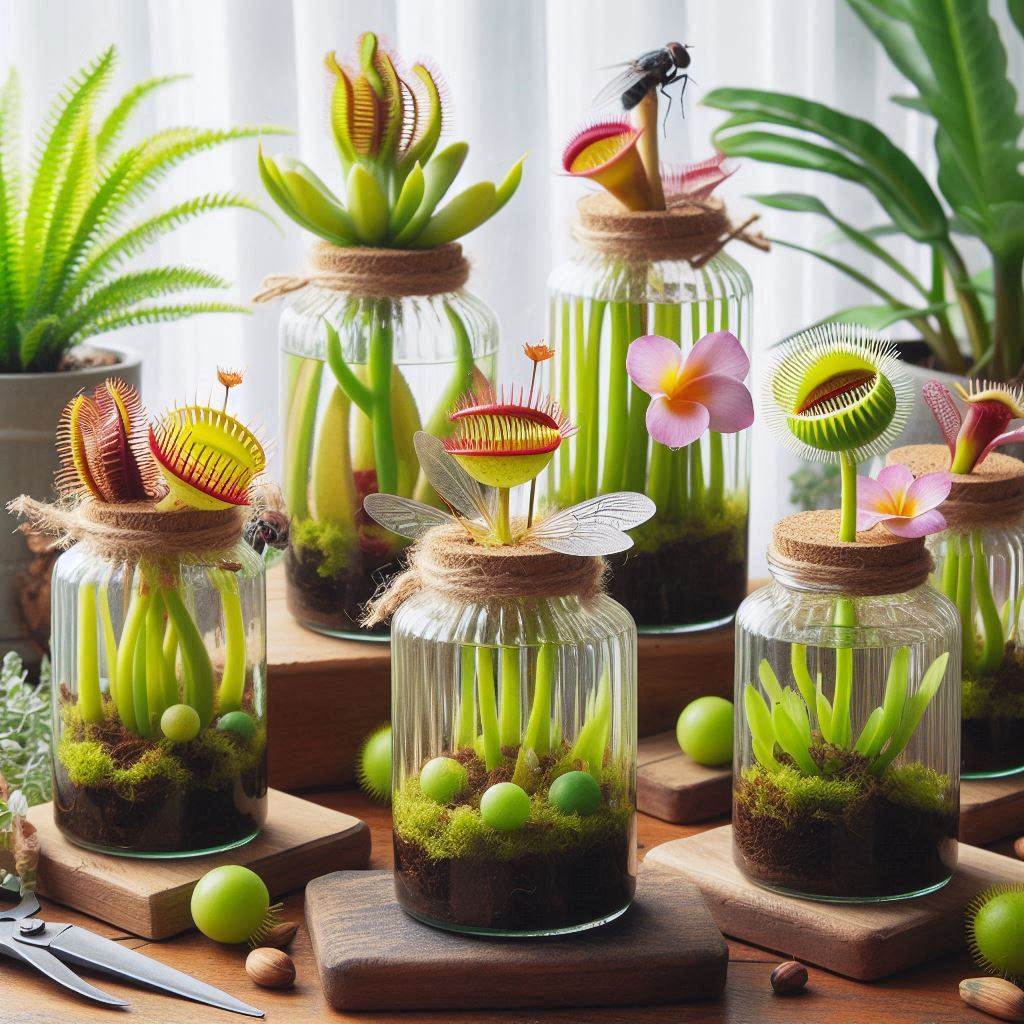
Nature provides a fascinating solution! If you have a sunny windowsill, consider introducing a carnivorous plant like Venus Flytrap or Pitcher Plant to your home. These fascinating plants attract flies with their sweet-smelling secretions and then trap them within their modified leaves, where the flies are digested and absorbed as nutrients by the plant.
11: Fly Catching Herb Garden (The Fragrant Fortress):
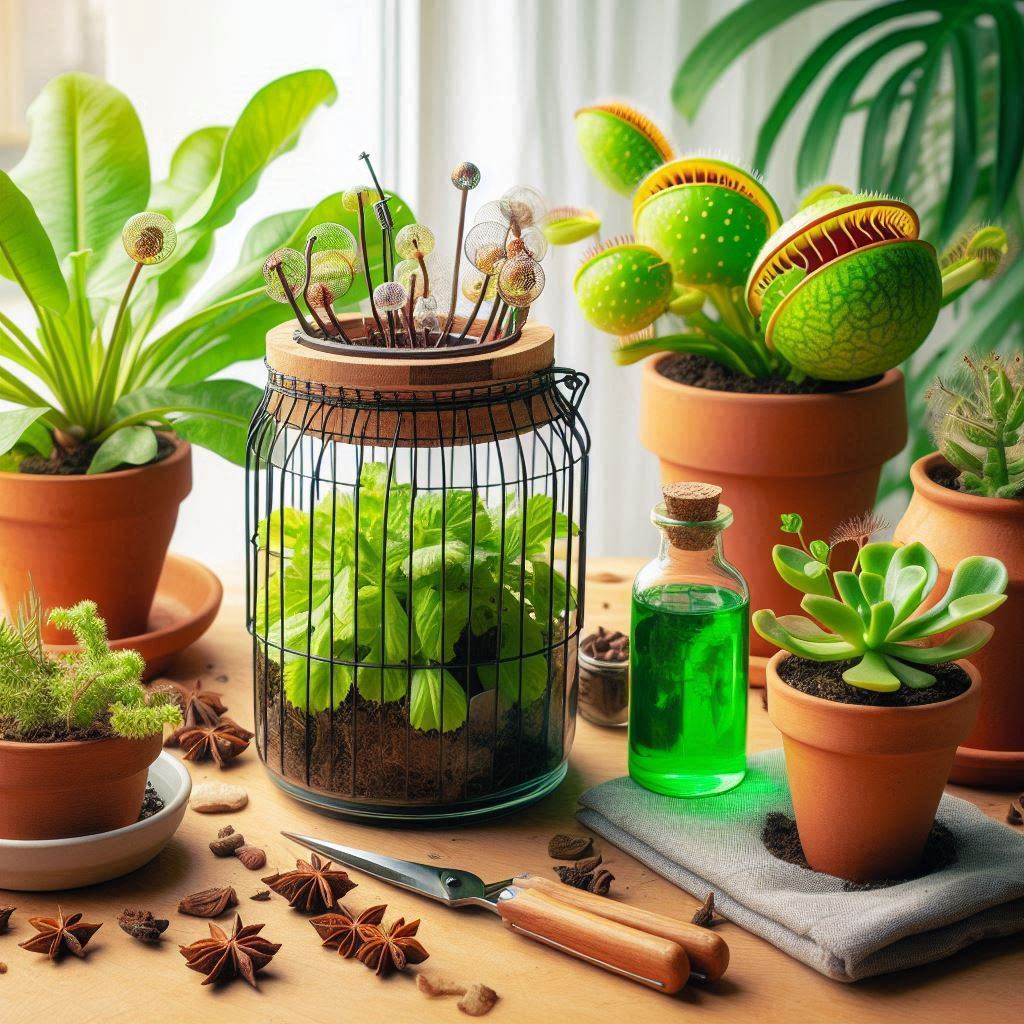
Certain herbs not only add beauty and flavor to your kitchen but also possess fly-repellent properties. Plant herbs like basil, mint, lavender, and citronella in pots or a window box. The strong fragrance of these herbs can help deter flies from entering your home in the first place.
Creating and Maintaining Your Fly Traps: Safety and Efficiency
Now that you have a diverse arsenal of DIY fly traps at your disposal, here are some key points to remember for their safe and effective use:
- Safety First: If you’re using baits that could be harmful to children or pets (like certain essential oils or concentrated vinegar solutions), make sure your traps are placed out of reach. Consider hanging them high up or using enclosed traps like the mason jar trap.
- Placement is Key: Locate your traps strategically in areas where you see the most fly activity. For fruit flies, this might be near your fruit bowl or kitchen sink. House flies tend to congregate near windows, doors, or trash cans.
- Emptying and Resetting: Depending on the trap design and how many flies you’re catching, you’ll need to empty and reset your traps regularly. Drowning traps might need emptying every few days, while sticky traps can last a bit longer. Dispose of the contents responsibly and rinse the trap before refilling it with bait.
Beyond the Trap: A Holistic Approach to Fly Control
While DIY fly traps are a great way to combat an existing fly problem, it’s always better to prevent flies from entering your home in the first place. Here are some additional strategies you can incorporate:
- Keep Your Home Clean: Flies are attracted to dirt, crumbs, and decaying matter. Regularly clean your surfaces, dispose of garbage promptly, and don’t leave dirty dishes in the sink.
- Seal Up Entry Points: Check your windows and doors for any gaps or cracks that might allow flies to enter. Seal them up with caulk or weather stripping.
- Use Natural Repellents: Certain essential oils like citronella, lemongrass, and lavender can deter flies. You can diffuse these oils in an essential oil diffuser or dab them on cotton balls strategically placed around your home.
Conclusion: Farewell, Pesky Pests!
You can use a combination of DIY fly traps, preventative measures, and natural repellents to effectively control the fly population in your home and create a more peaceful, pest-free environment. Remember, the key is to understand the type of fly you’re dealing with, choose the appropriate trap and bait, and maintain a clean and fly-unfriendly home. So, say goodbye to those buzzing bothers and enjoy your fly-free haven!

